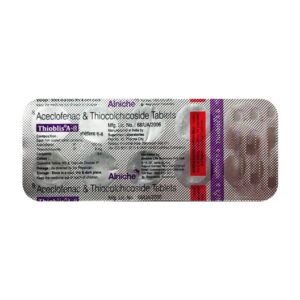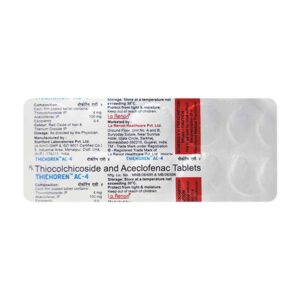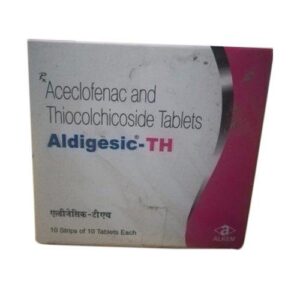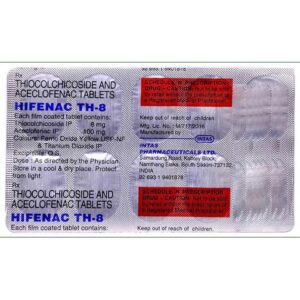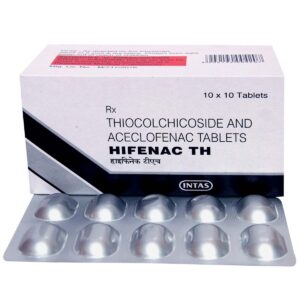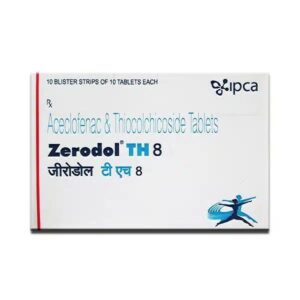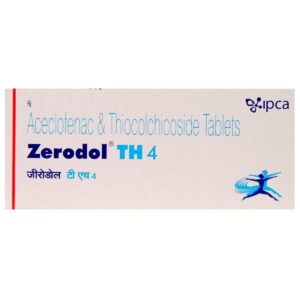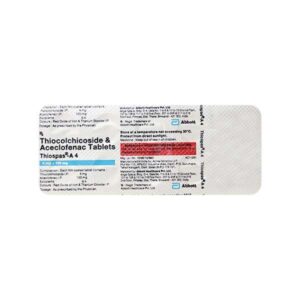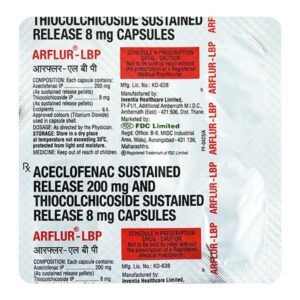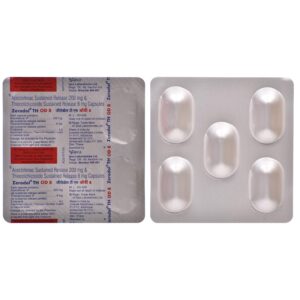ACECLOFENAC + THIOCOLCHICOSIDE
Aceclofenac: Aceclofenac is a nonsteroidal anti-inflammatory drug (NSAID) that is commonly used to relieve pain and inflammation associated with various conditions such as osteoarthritis, rheumatoid arthritis, and ankylosing spondylitis.
The drug works by inhibiting the production of prostaglandins, which are responsible for pain, swelling, and inflammation. By blocking the enzyme cyclooxygenase (COX), Aceclofenac reduces the synthesis of prostaglandins, thus providing relief from pain and inflammation.
The usual recommended dose of Aceclofenac is 100-200 mg per day, divided into two or three doses. It is important to take the medication with food, as it helps improve absorption and reduces the risk of gastrointestinal side effects.
As with any medication, Aceclofenac may have some side effects. The most common side effects include gastrointestinal disturbances such as stomach pain, indigestion, nausea, vomiting, and diarrhea. Other side effects may include headache, dizziness, rash, and itching. In rare cases, Aceclofenac can cause more serious side effects such as gastrointestinal ulcers, bleeding, liver problems, and allergic reactions. It is important to seek medical attention if any severe or persistent side effects occur.
Aceclofenac is contraindicated in individuals with a history of hypersensitivity or allergic reactions to NSAIDs, as well as those with a history of asthma, bleeding disorders, stomach ulcers, kidney or liver disease, and heart failure. It should be used with caution in elderly patients and those with a history of gastrointestinal disorders.
It is recommended to use Aceclofenac for the shortest duration and at the lowest effective dose to minimize the risk of side effects. As with any medication, it is important to discuss the appropriate dosage and potential risks with a healthcare professional before starting Aceclofenac.
Thiocolchicoside: Thiocolchicoside is a muscle relaxant medication that is primarily used to relieve muscle spasms and associated pain. It is commonly prescribed for conditions such as muscle strains, sprains, and musculoskeletal disorders.
The mechanism of action of Thiocolchicoside involves its ability to bind to specific receptors in the central nervous system. It enhances the release of an inhibitory neurotransmitter called gamma-aminobutyric acid (GABA) and reduces the release of excitatory neurotransmitters. This ultimately leads to muscle relaxation and pain relief.
Thiocolchicoside is typically administered orally, in the form of tablets or capsules. The recommended dose usually ranges from 8 to 16 mg, taken two or three times a day. However, the specific dosage may vary depending on the individual’s condition and response to treatment. It is important to follow the prescribed dose and duration of therapy as directed by a healthcare professional.
As with any medication, Thiocolchicoside may cause side effects. Common side effects include dizziness, drowsiness, headache, nausea, and gastrointestinal disturbances such as stomach pain or diarrhea. These side effects are usually mild and go away on their own. However, if they persist or worsen, it is advisable to consult a doctor.
In rare cases, Thiocolchicoside may cause more serious side effects such as allergic reactions, skin rashes, or liver toxicity. If any of these severe side effects occur, immediate medical attention should be sought.
It is important to note that Thiocolchicoside is a prescription medication and should only be taken under the guidance of a healthcare professional. It may interact with certain medications or medical conditions, so it is essential to inform the doctor about any other medications being taken or any pre-existing medical conditions before starting treatment with Thiocolchicoside.

